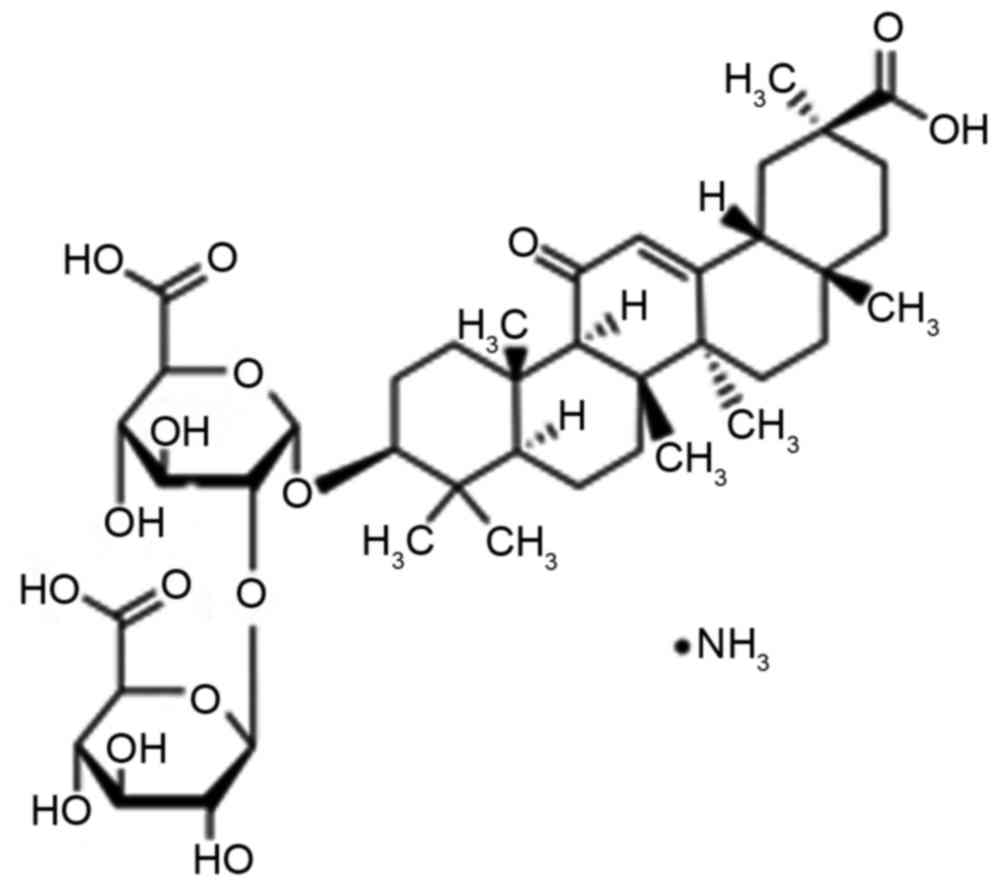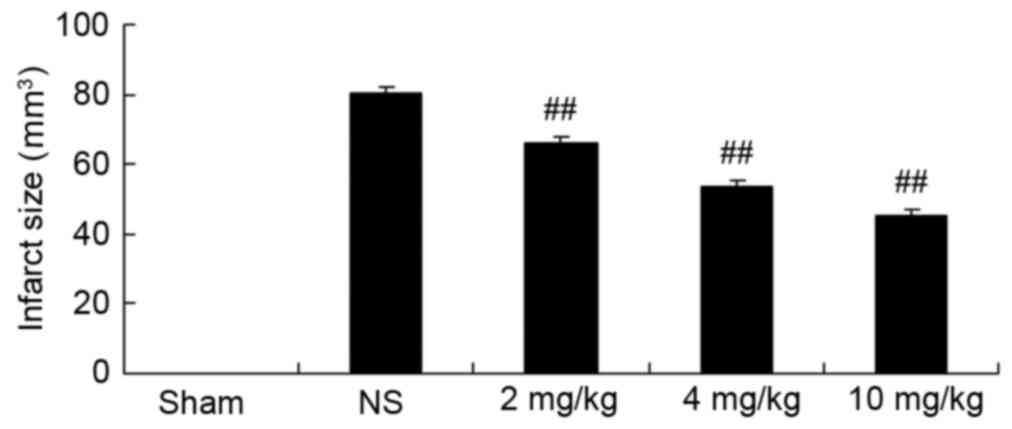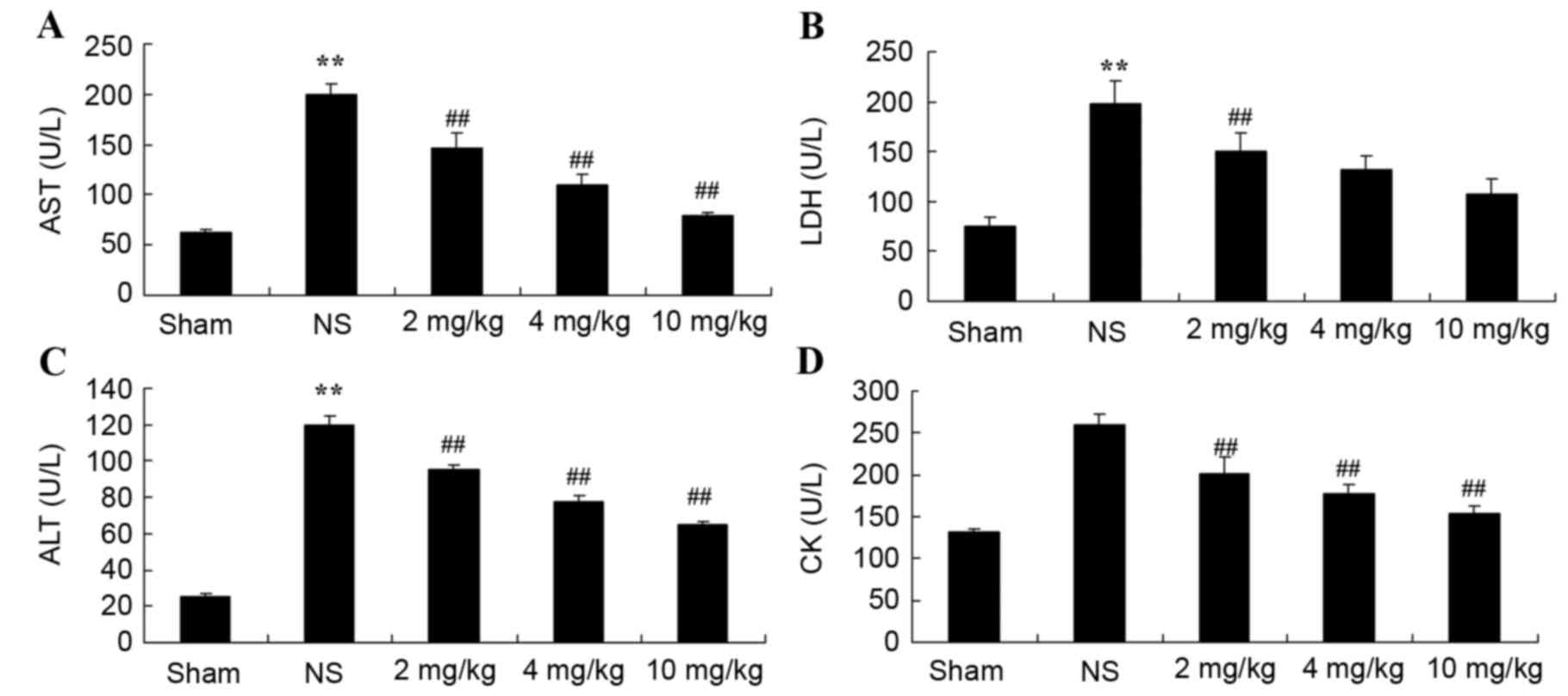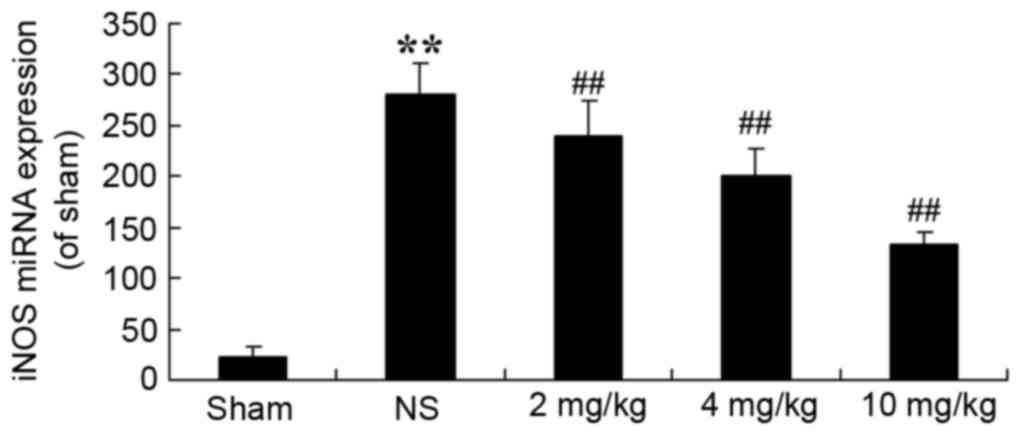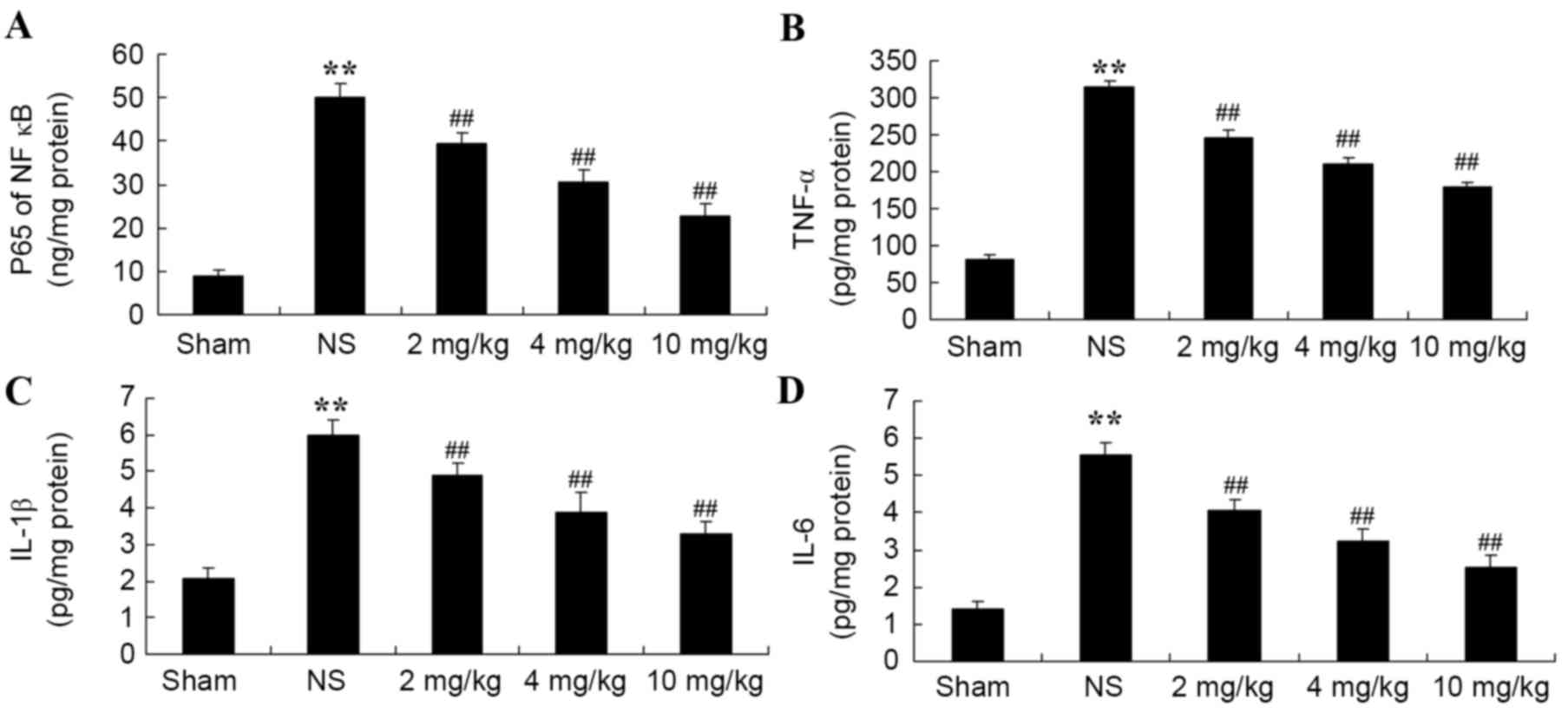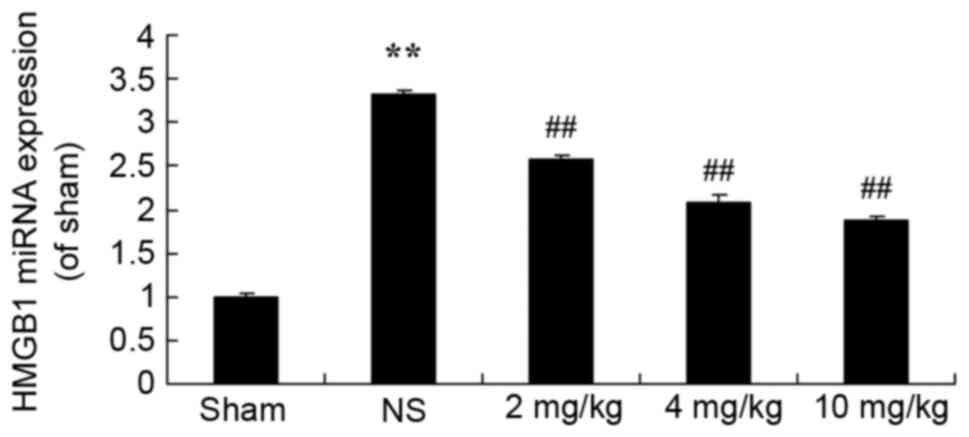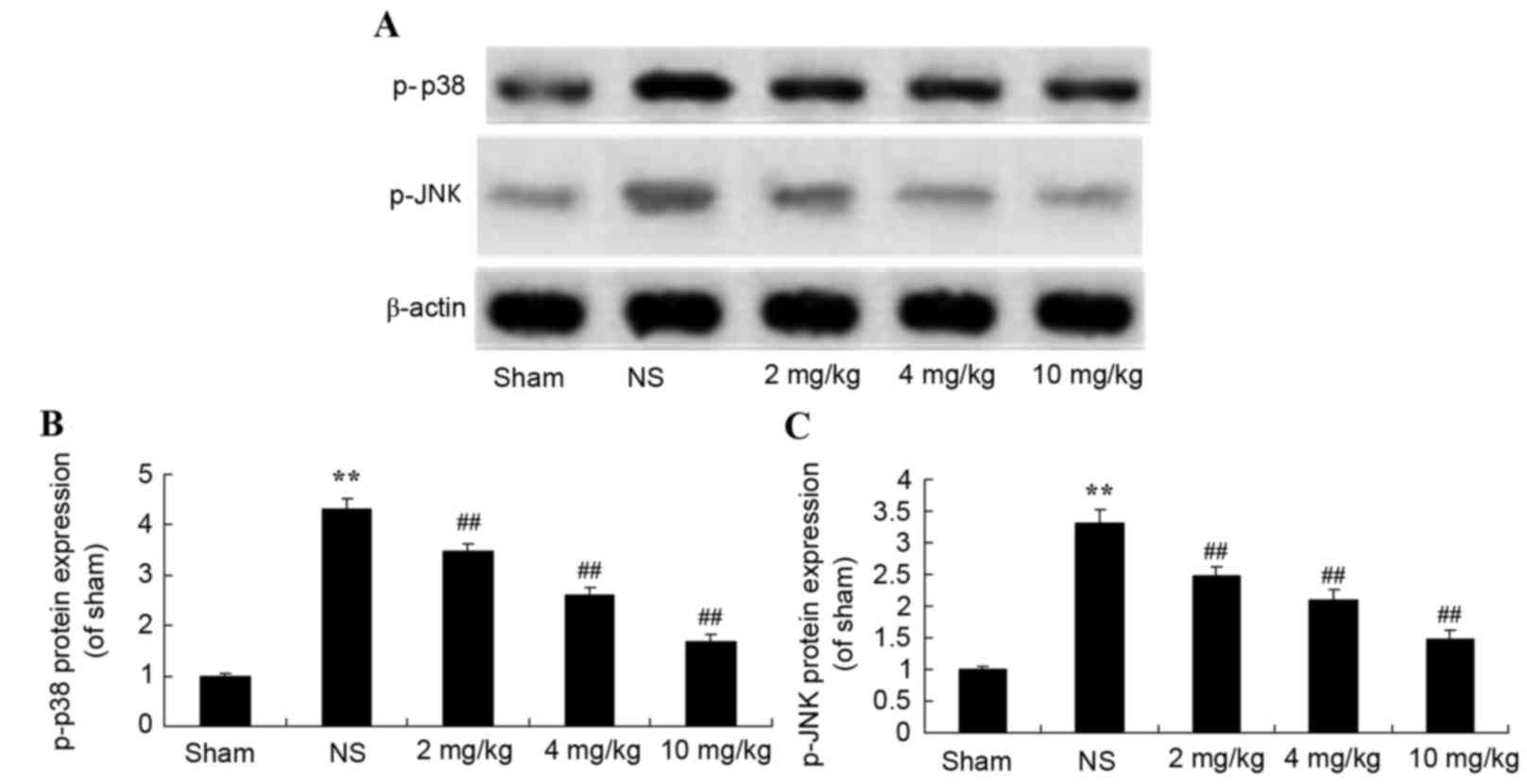|
1
|
Yao T, Lu W, Zhu J, et al: Role of
CD11b+Gr-1+ myeloid cells in AGEs-induced myocardial injury in a
mice model of acute myocardial infarction. Int J Clin Exp Pathol.
8:3238–3249. 2015.PubMed/NCBI
|
|
2
|
Valls N, Gormaz JG, Aguayo R, González J,
Brito R, Hasson D, Libuy M, Ramos C, Carrasco R, Prieto JC, et al:
Amelioration of persistent left ventricular function impairment
through increased plasma ascorbate levels following myocardial
infarction. Redox Rep. 21:75–83. 2016.PubMed/NCBI
|
|
3
|
Sun Z, Zeng J and Huang H: Intracoronary
injection of tirofiban prevents microcirculation dysfunction during
delayed percutaneous coronary intervention in patients with acute
myocardial infarction. Int J Cardiol. 208:137–140. 2016. View Article : Google Scholar : PubMed/NCBI
|
|
4
|
Mulla ZD, Wilson B, Abedin Z, Hernandez LL
and Plavsic SK: Acute myocardial infarction in pregnancy: A
statewide analysis. J Registry Manag. 42:12–17. 2015.PubMed/NCBI
|
|
5
|
Bergmeijer TO, Janssen PW, Schipper JC,
Qaderdan K, Ishak M, Ruitenbeek RS, Asselbergs FW, van 't Hof AW,
Dewilde WJ, Spanó F, et al: CYP2C19 genotype-guided antiplatelet
therapy in ST-segment elevation myocardial infarction
patients-Rationale and design of the Patient Outcome after primary
PCI (POPular) Genetics study. Am Heart J. 168:16–22.e1. 2014.
View Article : Google Scholar : PubMed/NCBI
|
|
6
|
Ota S, Tanimoto T, Hirata K, Orii M,
Shiono Y, Shimamura K, Ishibashi K, Yamano T, Ino Y, Kitabata H, et
al: Assessment of circumferential endocardial extent of myocardial
edema and infarction in patients with reperfused acute myocardial
infarction: A cardiovascular magnetic resonance study. Int Heart J.
55:234–238. 2014. View Article : Google Scholar : PubMed/NCBI
|
|
7
|
Liehn EA, Tuchscheerer N, Kanzler I,
Drechsler M, Fraemohs L, Schuh A, Koenen RR, Zander S, Soehnlein O,
Hristov M, et al: Double-edged role of the CXCL12/CXCR4 axis in
experimental myocardial infarction. J Am Coll Cardiol.
58:2415–2423. 2011. View Article : Google Scholar : PubMed/NCBI
|
|
8
|
Hu PY, Wang YW, Pang XH and Wang HW: T174M
polymorphism in the angiotensinogen gene and risk of myocardial
infarction: A meta-analysis. Genet Mol Res. 14:3767–3774. 2015.
View Article : Google Scholar : PubMed/NCBI
|
|
9
|
Jose R, Sajitha GR and Augusti KT: A
review on the role of nutraceuticals as simple as se(2+) to complex
organic molecules such as glycyrrhizin that prevent as well as cure
diseases. Indian J Clin Biochem. 29:119–132. 2014. View Article : Google Scholar : PubMed/NCBI
|
|
10
|
Rahman S and Sultana S: Glycyrrhizin
exhibits potential chemopreventive activity on 12-O-tetradecanoyl
phorbol-13-acetate-induced cutaneous oxidative stress and tumor
promotion in Swiss albino mice. J Enzyme Inhib Med Chem.
22:363–369. 2007. View Article : Google Scholar : PubMed/NCBI
|
|
11
|
He SQ, Gao M, Fu YF and Zhang YN:
Glycyrrhizic acid inhibits leukemia cell growth and migration via
blocking AKT/mTOR/STAT3 signaling. Int J Clin Exp Pathol.
8:5175–5181. 2015.PubMed/NCBI
|
|
12
|
Livak KJ and Schmittgen TD: Analysis of
relative gene expression data using real-tie quantitative PCR and
the 2(−Delta Delta C(T)) Method. Methods. 25:402–408. 2001.
View Article : Google Scholar : PubMed/NCBI
|
|
13
|
Geng ZH, Huang L, Song MB and Song YM:
Protective effect of a polysaccharide from Salvia miltiorrhiza on
isoproterenol (ISO)-induced myocardial injury in rats. Carbohydr
Polym. 132:638–642. 2015. View Article : Google Scholar : PubMed/NCBI
|
|
14
|
Husebye T, Eritsland J, Arnesen H,
Bjørnerheim R, Mangschau A, Seljeflot I and Andersen GØ:
Association of interleukin 8 and myocardial recovery in patients
with ST-elevation myocardial infarction complicated by acute heart
failure. PLoS One. 9:e1123592014. View Article : Google Scholar : PubMed/NCBI
|
|
15
|
Tilling L, Hunt J, Donald A, Clapp B and
Chowienczyk P: Darbepoetin enhances endothelium-dependent vasomotor
function in patients with stable coronary artery disease only after
preceding ischaemia/reperfusion. Clin Sci (Lond). 122:329–336.
2012. View Article : Google Scholar : PubMed/NCBI
|
|
16
|
Yang XC, Liu Y, Wang LF, Cui L, Wang T, Ge
YG, Wang HS, Li WM, Xu L, Ni ZH, et al: Reduction in myocardial
infarct size by postconditioning in patients after percutaneous
coronary intervention. J Invasive Cardiol. 19:424–430.
2007.PubMed/NCBI
|
|
17
|
Zhang J, Wu Y, Weng Z, Zhou T, Feng T and
Lin Y: Glycyrrhizin protects brain against ischemia-reperfusion
injury in mice through HMGB1-TLR4-IL-17A signaling pathway. Brain
Res. 1582:176–186. 2014. View Article : Google Scholar : PubMed/NCBI
|
|
18
|
Zhai CL, Zhang MQ, Zhang Y, Xu HX, Wang
JM, An GP, Wang YY and Li L: Glycyrrhizin protects rat heart
against ischemia-reperfusion injury through blockade of
HMGB1-dependent phospho-JNK/Bax pathway. Acta Pharmacol Sin.
33:1477–1487. 2012. View Article : Google Scholar : PubMed/NCBI
|
|
19
|
Dong W, Zhou M, Dong M, Pan B, Liu Y, Shao
J, Gu X, Huang Y, Li G, Wang Y and Sun H: Keto acid metabolites of
branched-chain amino acids inhibit oxidative stress-induced
necrosis and attenuate myocardial ischemia-reperfusion injury. J
Mol Cell Cardiol. 101:90–98. 2016. View Article : Google Scholar : PubMed/NCBI
|
|
20
|
Chan W, Taylor AJ, Ellims AH, Lefkovits L,
Wong C, Kingwell BA, Natoli A, Croft KD, Mori T, Kaye DM, et al:
Effect of iron chelation on myocardial infarct size and oxidative
stress in ST-elevation-myocardial infarction. Circ Cardiovasc
Interv. 5:270–278. 2012. View Article : Google Scholar : PubMed/NCBI
|
|
21
|
Wang Z, Wang Y, Ye J, Lu X, Cheng Y, Xiang
L, Chen L, Feng W, Shi H, Yu X, et al: bFGF attenuates endoplasmic
reticulum stress and mitochondrial injury on myocardial
ischaemia/reperfusion via activation of PI3K/Akt/ERK1/2 pathway. J
Cell Mol Med. 19:595–607. 2015. View Article : Google Scholar : PubMed/NCBI
|
|
22
|
Mura M, Hopkins TG, Michael T, Abd-Latip
N, Weir J, Aboagye E, Mauri F, Jameson C, Sturge J, Gabra H, et al:
LARP1 post-transcriptionally regulates mTOR and contributes to
cancer progression. Oncogene. 34:5025–5036. 2015. View Article : Google Scholar : PubMed/NCBI
|
|
23
|
Wang ZH, Hsieh CH, Liu WH and Yin MC:
Glycyrrhizic acid attenuated glycative stress in kidney of diabetic
mice through enhancing glyoxalase pathway. Mol Nutr Food Res.
58:1426–1435. 2014. View Article : Google Scholar : PubMed/NCBI
|
|
24
|
Zaitone SA and Abo-Gresha NM: Rosuvastatin
promotes angiogenesis and reverses isoproterenol-induced acute
myocardial infarction in rats: Role of iNOS and VEGF. Eur J
Pharmacol. 691:134–142. 2012. View Article : Google Scholar : PubMed/NCBI
|
|
25
|
Ye Y, Perez-Polo JR and Birnbaum Y:
Protecting against ischemia-reperfusion injury: Antiplatelet drugs,
statins and their potential interactions. Ann N Y Acad Sci.
1207:76–82. 2010. View Article : Google Scholar : PubMed/NCBI
|
|
26
|
Chen TH, Liao FT, Yang YC and Wang JJ:
Inhibition of inducible nitric oxide synthase ameliorates
myocardial ischemia/reperfusion injury-induced acute renal injury.
Transplant Proc. 46:pp. 1123–1126. 2014; View Article : Google Scholar : PubMed/NCBI
|
|
27
|
Hu Q, Zhou D and Li X, Yang N, Guo P, Xu D
and Li X: Renoprotective effects of propofol on the expression of
iNOS protein in rats with ischemia reperfusion injury. Int J Clin
Exp Med. 8:776–780. 2015.PubMed/NCBI
|
|
28
|
Kim YM, Kim HJ and Chang KC: Glycyrrhizin
reduces HMGB1 secretion in lipopolysaccharide-activated RAW 264.7
cells and endotoxemic mice by p38/Nrf2-dependent induction of HO-1.
Int Immunopharmacol. 26:112–118. 2015. View Article : Google Scholar : PubMed/NCBI
|
|
29
|
Kleinbongard P, Schulz R and Heusch G:
TNFα in myocardial ischemia/reperfusion, remodeling and heart
failure. Heart Fail Rev. 16:49–69. 2011. View Article : Google Scholar : PubMed/NCBI
|
|
30
|
Yung MM, Chan DW, Liu VW, Yao KM and Ngan
HY: Activation of AMPK inhibits cervical cancer cell growth through
AKT/FOXO3a/FOXM1 signaling cascade. BMC Cancer. 13:3272013.
View Article : Google Scholar : PubMed/NCBI
|
|
31
|
Hu G, Huang X, Zhang K, Jiang H and Hu X:
Anti-inflammatory effect of B-type natriuretic peptide
postconditioning during myocardial ischemia-reperfusion:
Involvement of PI3K/Akt signaling pathway. Inflammation.
37:1669–1674. 2014. View Article : Google Scholar : PubMed/NCBI
|
|
32
|
Michaelis M, Geiler J, Naczk P, Sithisarn
P, Leutz A, Doerr HW and Cinatl J Jr: Glycyrrhizin exerts
antioxidative effects in H5N1 influenza A virus-infected cells and
inhibits virus replication and pro-inflammatory gene expression.
PLoS One. 6:e197052011. View Article : Google Scholar : PubMed/NCBI
|
|
33
|
Xiong J, Wang Q, Xue FS, Yuan YJ, Li S,
Liu JH, Liao X and Zhang YM: Comparison of cardioprotective and
anti-inflammatory effects of ischemia pre- and postconditioning in
rats with myocardial ischemia-reperfusion injury. Inflamm Res.
60:547–554. 2011. View Article : Google Scholar : PubMed/NCBI
|
|
34
|
Nogueira-Machado JA and de Oliveira Volpe
CM: HMGB-1 as a target for inflammation controlling. Recent Pat
Endocr Metab Immune Drug Discov. 6:201–209. 2012. View Article : Google Scholar : PubMed/NCBI
|
|
35
|
Dejean E, Foisseau M, Lagarrigue F, Lamant
L, Prade N, Marfak A, Delsol G, Giuriato S, Gaits-Iacovoni F and
Meggetto F: ALK+ALCLs induce cutaneous, HMGB-1-dependent IL-8/CXCL8
production by keratinocytes through NF-κB activation. Blood.
119:4698–4707. 2012. View Article : Google Scholar : PubMed/NCBI
|
|
36
|
Qiu J, Nishimura M, Wang Y, Sims JR, Qiu
S, Savitz SI, Salomone S and Moskowitz MA: Early release of HMGB-1
from neurons after the onset of brain ischemia. J Cereb Blood Flow
Metab. 28:927–938. 2008. View Article : Google Scholar : PubMed/NCBI
|
|
37
|
Frost RA, Nystrom G, Burrows PV and Lang
CH: Temporal differences in the ability of ethanol to modulate
endotoxin-induced increases in inflammatory cytokines in muscle
under in vivo conditions. Alcohol Clin Exp Res. 29:1247–1256. 2005.
View Article : Google Scholar : PubMed/NCBI
|
|
38
|
Tao X, Sun X, Yin L, Han X, Xu L, Qi Y, Xu
Y, Li H, Lin Y, Liu K and Peng J: Dioscin ameliorates cerebral
ischemia/reperfusion injury through the downregulation of TLR4
signaling via HMGB-1 inhibition. Free Radic Biol Med. 84:103–115.
2015. View Article : Google Scholar : PubMed/NCBI
|
|
39
|
Ni B, Cao Z and Liu Y: Glycyrrhizin
protects spinal cord and reduces inflammation in spinal cord
ischemia-reperfusion injury. Int J Neurosci. 123:745–751. 2013.
View Article : Google Scholar : PubMed/NCBI
|
|
40
|
Pando R, Cheporko Y, Haklai R,
Maysel-Auslender S, Keren G, George J, Porat E, Sagie A, Kloog Y
and Hochhauser E: Ras inhibition attenuates myocardial
ischemia-reperfusion injury. Biochem Pharmacol. 77:1593–1601. 2009.
View Article : Google Scholar : PubMed/NCBI
|
|
41
|
Jeong CW, Yoo KY, Lee SH, Jeong HJ, Lee CS
and Kim SJ: Curcumin protects against regional myocardial
ischemia/reperfusion injury through activation of RISK/GSK-3β and
inhibition of p38 MAPK and JNK. J Cardiovasc Pharmacol Ther.
17:387–394. 2012. View Article : Google Scholar : PubMed/NCBI
|
|
42
|
Honda H, Nagai Y, Matsunaga T, Saitoh S,
Akashi-Takamura S, Hayashi H, Fujii I, Miyake K, Muraguchi A and
Takatsu K: Glycyrrhizin and isoliquiritigenin suppress the LPS
sensor toll-like receptor 4/MD-2 complex signaling in a different
manner. J Leukoc Biol. 91:967–976. 2012. View Article : Google Scholar : PubMed/NCBI
|















